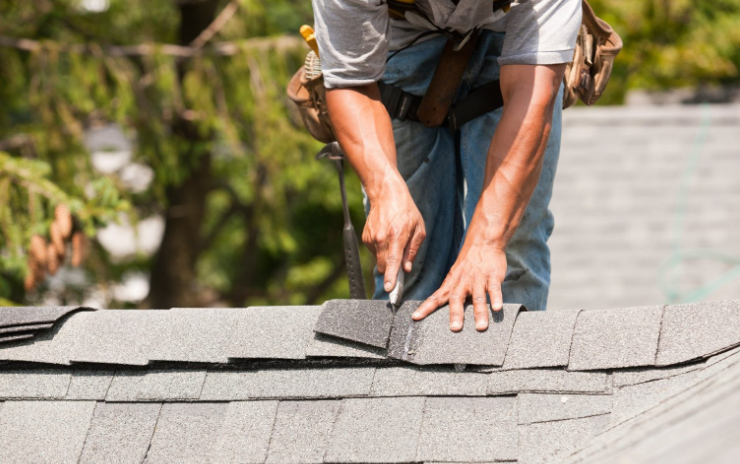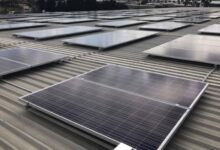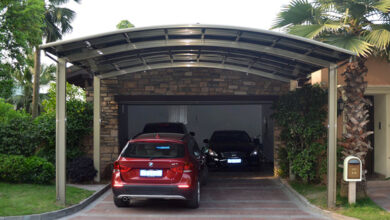
Home Maintenance: How to Increase the Average Lifespan of a Roof
Roofs are not only the most important part of a home. They’re also very rigid and durable. Still, roof replacement services can cost upwards of $10,000.
If you want to avoid paying these costs in the near future, you should work hard in improving your roof lifespan. The good news is that prolonging the lifespan of roof structures can be done by requesting simple maintenance.
There are also some easier steps you can follow to keep your roof secure for years to come. In this article, we’ll explain all you need to know about the average lifespan of a roof and how to improve it.
Table of Contents
What is the Average Lifespan of a Roof?
One of the factors that show you need a roof is its age. On average, a roof tends to last at least 30 years. With regular roof maintenance, your structure could last much longer.
However, different types of roofs have varying shelf lives. For example, asphalt shingle roofs are more common than metal roofs, but they don’t last as long.
Below, we’ve listed some of the factors that can impact your roof’s lifespan:
- Workmanship Quality: If your roof was professionally installed, it’d definitely last longer
- Environmental Conditions: Debris, weather, and high winds can all impact the longevity of your roof
- Quality of Roofing Materials: If you cut corners on material quality when installing a new roof, you could shorten its lifespan
- Type of Roofing Materials: Each roofing material has its own level of durability, which can impact your roof’s shelf life
The most important factor here is the type of roofing materials used. Let’s take a look at different roofing materials to see how long they last on average.
Asphalt Shingles
Asphalt shingles are the most common roofing structure in the United States. These roofing structures are durable, versatile, and usually carry long warranties.
Asphalt shingles are made of asphalt sealant and fiberglass. They’re known for protecting homes from harsh UV sun rays, extreme temperatures, and heavy winds.
Usually, asphalt shingles will last anywhere between 15 and 30 years. The conditioning factors depend on your home’s region and climate. There are three main types of asphalt shingles, each with different durability limits:
- 3-Tab Shingles: The most affordable shingle option, these will last between 15 and 20 years
- Architectural Shingles: These shingles are pricier, lasting 20-30 years
- Premium Shingles: This is the most expensive shingle option, lasting 25-40 years
If your shingles are cracked or curled, it’s time to replace them.
Metal Roofing
Metal roofs are some of the most durable roofing structures in the world. They’re usually made of copper, aluminum, or steel. Because of this, metal roofs can last 40-70 years.
Homeowners usually receive warranties that can last up to a lifetime. What’s more, is that metal roofs made of zinc and copper can last more than a century.
Here are the different types of metal roofing and their lifespans:
- Stand Seam Metal Roofing: The most common type of metal roof, they can last up to 50 years
- Ribbed Metal Plates: They last between 25 and 50 years and are much more affordable to install
- Stone-Coated Steel Tiles: Designed to handle high wind speeds, these tiles can last between 30-50 years
If you notice leaking, rust, and discoloration, it’s time to replace your metal roof.
Wood Shingles
Wood shingles usually last up to 30 years. Since they’re not as durable as other roofing materials, you’ll need to maintenance your roof quite often. This includes requesting yearly cleanings and repainting every five years.
The type of wood used on your roof can impact its durability. For example, cedar shingles last longer because they’re insect-resistant. They can also withstand very high winds.
Clay Tile Roofs
Clay tile roofs are some of the most durable roofing materials on the market. They can last up to 100 years and often come packed with a lifetime warranty.
In order to preserve your clay tile roof, you’ll need to make sure it’s clean throughout the year. Excess debris can contribute to the growth of mold, algae, and moss.
In particular, moss can penetrate your clay tiles and cause leaks. Also, clay tiles are susceptible to extremely cold temperatures. The constant thawing and freezing can damage the tiles and weaken the structure over time.
Slate Tile Roofs
Slate tile roofs last longer than any other roofing material. These structures can last up to 200 years. Slate tiles are immune to extreme temperatures. They also don’t retain any moisture, meaning that you don’t need to request continual roof maintenance.
Keep Your Roof Clean
It’s unbelievable to consider that roofs can be compromised by a bit of debris. The more debris that accumulates on your roof, the more likely other substances can grow.
These substances include mold, algae, and moss. All of which can penetrate your roof, cause leaks, and lead to widespread damage over time. Make sure to hire these roofing companies to keep your roof cleaned at least twice a year.
Make Sure Your Gutters are Installed Correctly
The importance of gutters can’t be overstated. Gutters are designed to channel water from your roof down the slope of your home and away from its foundation.
Gutters can keep debris away from your roof. They can also keep moisture off your roof and away from its eaves.
Prevent Ice Dams
Ice dams are not built by beavers. When temperatures get too cold, ice can form on a roof. This can cause ice to cover gutters and prevent runoff from falling off the roof.
Since the water has nowhere to go, it’ll pool on your roof and leak into your home. This can cause long-term water damage and mold growth. To prevent ice dams, make sure your gutters are cleaned before the winter.
Also, make sure you winterize your home to keep your roofs heated and able to melt ice properly.
Keep Surrounding Trees Trimmed
The trees in your yard may look beautiful in the spring and summer months. However, if you live in an area with a harsh climate, these trees can become problematic for your roof.
Fallen leaves and branches can damage your roof and cause you to spend hundreds of dollars on roof cleaning fees. Because of this, make sure you trim surrounding trees before they can grow in the spring.
Use Coatings and Sealants
Over time, debris and environmental conditions can damage your roof. This can ultimately create leaks you won’t notice until the damage is too massive to repair.
To avoid this outcome, use coatings and sealants to safeguard your roof against any debris and outdoor elements. Here are things to consider before making a purchase:
- Learn more about the difference between sealants and coatings before making a purchase
- Research your roof material and find the right product for the job
- Choose a product is an excellent quality rating
If you don’t have the time to apply these products, make sure to hire a roofing company to do the work for you.
Perform a Roof Inspection
The best way to improve your roof’s longevity is by keeping a close eye on its structural integrity. Receiving a yearly inspection is the only way to tell how long your roof will last.
An inspector will also give you the rundown of any problems that are affecting your roof. Here’s what you need to know before requesting a roof inspection:
- You should request a roof inspection at least once a year
- Only work with a qualified roofing contractor that has years of experience and business insurance
An inspection is only meant to diagnose the health of your roof. You’ll still need to request maintenance to keep your roof healthy.
Inspect the Flashing
Flashing is a metal material that seals a roofing structure. It keeps water and debris from penetrating your roof and entering your home. Sometimes, high winds and fallen tree branches can dent your roof’s flashing.
In this case, damage can go unnoticed until you notice water damage. It only takes a few minutes to repair damaged flashing. If you can’t scale your roof safely, call your local roofing company to do the work for you.
Ventilate Your Attic
A little-known secret to prolonging your roof is making sure your attic is properly ventilated. If your attic isn’t ventilated, it can reach temperatures more than 160° Fahrenheit.
This heat will travel into the insulation and cause your roof to age quicker. In the winter months, a poorly-ventilated attic can trap moisture. This can cause ice dams and other major roofing problems.
Using a humidifier is a great way to ventilate your attic and make sure these issues don’t happen.
Learn More Home and Lifestyle Tips
As you can see, the average lifespan of a roof can be affected by how well you pay attention to it. If you schedule regular roof maintenance, you can prolong the longevity of your roof and save money in the long run.
Do you want to learn more lifestyle tips for your home? If so, check out our blog for more related articles.








